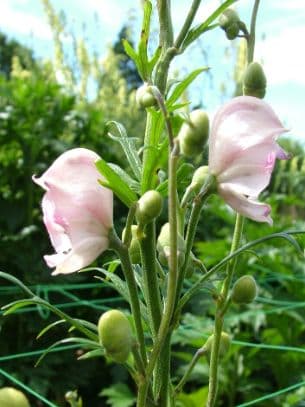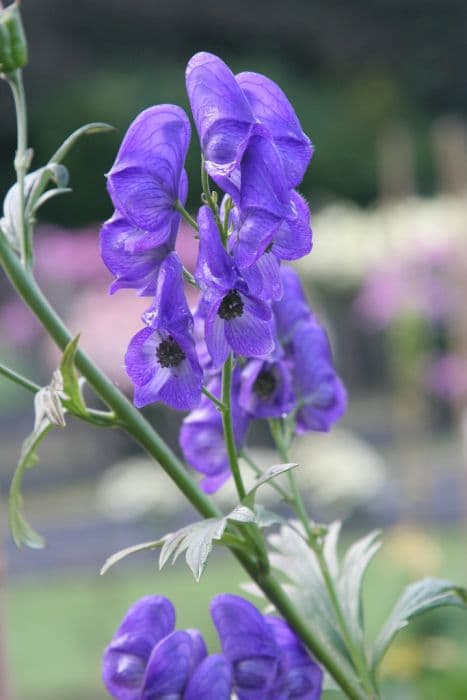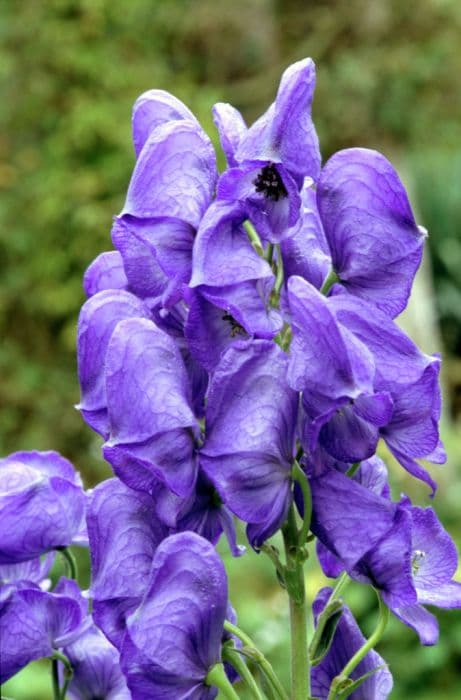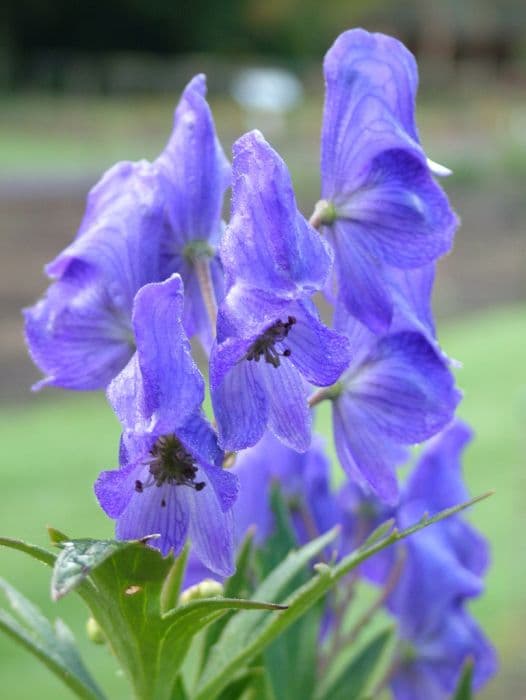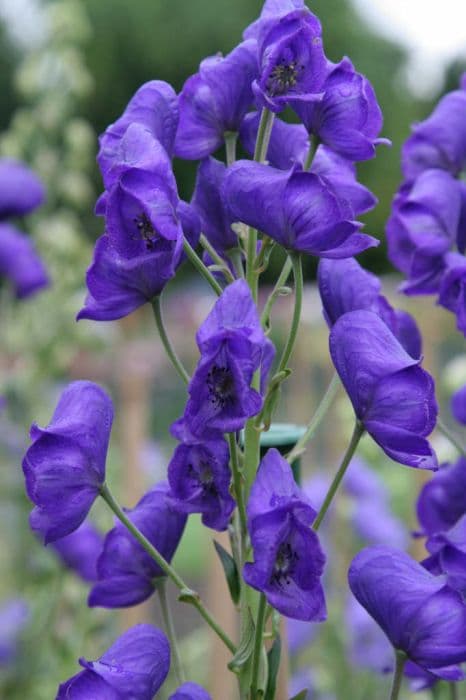Clematis Clematis 'Gillian Blades' (EL)

ABOUT
Clematis 'Gillian Blades' is a striking plant known for its elegant flowering display. This cultivar boasts large, showy blooms that are predominantly white, providing a serene and crisp appearance. The flowers are characterized by their numerous broad, overlapping petals that form a substantial, sometimes slightly ruffled, circular shape. The heart of each flower is highlighted by a prominent central structure comprised of contrasting, pale yellow stamens which add a touch of warmth to the cool white petals. The foliage of the Clematis 'Gillian Blades' serves as a lush backdrop to its bright blossoms. The leaves are deep green, sometimes with a glossy texture, which nicely complements the purity of the flowers. They are typically compound, with individual leaflets arranged in groups, providing a textured and layered look to the overall greenery. During the blooming season, this Clematis variety creates a cascade of color, with the flowers generously distributed throughout the plant, sometimes appearing as if they are covering the entire surface with a blanket of white. The visual impact of Clematis 'Gillian Blades' is often described as both sophisticated and refreshing, making it a popular choice for gardeners looking to add a touch of elegance to their landscape.
About this plant
 Names
NamesFamily
Ranunculaceae
Synonyms
Gillian Blades Clematis, Early Large-flowered Clematis
Common names
Clematis 'Gillian Blades' (EL)
 Toxicity
ToxicityTo humans
Clematis, including 'Gillian Blades', contains a compound known as protoanemonin, which can be toxic if ingested. When parts of the plant are chewed or ingested, the compound can cause mouth irritation and severe digestive upset, such as diarrhea and vomiting. In some cases, it may also lead to salivation and ulcers in the mouth. Handling the plant may cause skin irritation in sensitive individuals.
To pets
Clematis, including 'Gillian Blades', is also toxic to pets, including dogs, cats, and horses. The protoanemonin present in the plant can irritate the mouth, cause excessive drooling, vomiting, and diarrhea if ingested. In some cases, ingestion can lead to weakness and coordination issues. It is important to prevent pets from chewing on or ingesting parts of this plant to avoid these adverse effects.
 Characteristics
CharacteristicsLife cycle
Perennials
Foliage type
Deciduous
Color of leaves
Green
Flower color
White
Height
8 feet (2.44 meters)
Spread
3 feet (0.91 meters)
Plant type
Climber
Hardiness zones
4
Native area
Europe
Benefits
 General Benefits
General Benefits- Ornamental Appeal: Clematis 'Gillian Blades' is known for its beautiful white flowers, which add aesthetic value to gardens and landscapes.
- Vertical Gardening: It is an excellent choice for vertical gardening due to its climbing habit, allowing it to cover walls, trellises, and arbors.
- Seasonal Interest: This plant provides seasonal interest with its blossoming period in late spring and early summer, plus often again in late summer.
- Wildlife Attraction: The flowers attract beneficial pollinators like bees and butterflies, enhancing the biodiversity of the area.
- Easy to Grow: It is relatively easy to grow and maintain, making it suitable for gardeners of all skill levels.
- Versatility: Clematis 'Gillian Blades' can be used in a variety of garden styles, including cottage gardens, mixed borders, and container gardens.
- Privacy: When grown on fences or screens, it can provide privacy and reduce noise from outside sources.
- Shade: By growing over pergolas or archways, it can create shaded areas in the garden, making for comfortable outdoor spaces.
 Medical Properties
Medical PropertiesThis plant is not used for medical purposes.
 Air-purifying Qualities
Air-purifying QualitiesThis plant is not specifically known for air purifying qualities.
 Other Uses
Other Uses- Art and Craft Projects: The Clematis can be used to create dried floral arrangements or incorporated into wreaths and other decor items for its aesthetic appeal.
- Photography Prop: The striking flowers of the Clematis can act as a natural backdrop or focal point for outdoor photography sessions.
- Educational Tool: Gardeners and educators can use the Clematis to teach about plant habits, climbing mechanisms, and pollinator attractions.
- Fabric Dyeing: The petals or leaves of the Clematis could potentially be used in natural dyeing processes to impart color to textiles.
- Theme Gardens: Clematis can be featured in moon gardens for their light-colored blooms that can appear luminous in the moonlight.
- Culinary Garnish: Though not commonly consumed, flowers from the Clematis could be used decoratively as non-toxic garnishes on plates or platters.
- Literary Inspiration: The unique and vibrant Clematis blooms can serve as a muse for poets and writers crafting descriptions of gardens or nature.
- Symbolic Gifts: Representing mental beauty, the Clematis can be uniquely used as a gift to embody the sentiment for special occasions.
- Companion Planting: Some believe that planting Clematis near roses or other plants can create a mutually beneficial relationship and enhance garden aesthetics.
- Perfume Inspiration: While not directly used in perfumery, the fragrance of Clematis could inspire scent profiles for perfumes or scented products.
Interesting Facts
 Feng Shui
Feng ShuiThe Clematis is not used in Feng Shui practice.
 Zodiac Sign Compitability
Zodiac Sign CompitabilityThe Clematis is not used in astrology practice.
 Plant Symbolism
Plant Symbolism- Mental Agility: Clematis is often associated with intellect and focus, symbolizing the ability to navigate through complex thoughts and ideas.
- Creativity: With its intricate and vibrant flowers, clematis represents the flow of creative ideas and artistic expression.
- Aspiration: The way clematis vines reach upwards signifies striving for higher goals and aspirations in life.
- Beauty: The striking appearance of 'Gillian Blades' with its white blossoms suggests purity, elegance, and inner beauty.
- Spiritual Exploration: The climbing nature of clematis can symbolize spiritual growth or the journey towards enlightenment.
 Water
WaterThe Clematis 'Gillian Blades', also known as the ornamental vine, requires regular watering to maintain a moist but not waterlogged soil, especially during its growing season in the spring and summer. Water the plant deeply once a week, providing about 1 gallon of water each time to encourage a deep root system. Increase the frequency of watering during hot, dry spells to prevent the soil from drying out completely. During the winter, reduce watering since the plant is dormant, but do not allow the soil to become completely dry. It's important to avoid overhead watering to prevent fungal diseases, opting instead to water at the base of the plant.
 Light
LightThe Clematis 'Gillian Blades' thrives best in a location where it can receive full sun to partial shade. It prefers at least 6 hours of sunlight each day, but during the hottest part of the afternoon, a little bit of shade is beneficial to prevent wilting. An ideal spot might be one with morning sunlight and afternoon shade, especially in regions with very hot summer temperatures.
 Temperature
TemperatureThe ornamental vine prefers a temperature range between 50°F and 85°F for optimal growth. It can survive temperatures down to about 20°F but should be protected from harsh, freezing conditions. During intense heat, it's crucial to provide the plant with adequate moisture and possibly some afternoon shade to avoid heat stress.
 Pruning
PruningPruning the ornamental vine encourages healthy growth and flowering. It should be pruned in late winter or early spring before new growth begins. Remove any dead or weak stems, and cut back the remaining stems to strong buds. This vine belongs to pruning group 2, which means it blooms on both old and new wood; therefore, light pruning to shape the plant and remove any undesirable growth is the usual practice. It's best to prune after the first flush of flowers has finished to encourage a second bloom.
 Cleaning
CleaningAs needed
 Soil
SoilClematis 'Gillian Blades' thrives in well-draining, loamy soil with a pH range of 6.5 to 7.5. A mix of two-thirds garden soil and one-third compost or well-rotted manure is ideal, with a handful of gravel or perlite for improved drainage.
 Repotting
RepottingClematis 'Gillian Blades' should be repotted only when the root system has outgrown the current container, generally every 2 to 3 years. In the meantime, top-dressing with compost can refresh the nutrients.
 Humidity & Misting
Humidity & MistingClematis 'Gillian Blades' prefers moderate humidity levels, typical of outdoor conditions; it does not require high humidity and can tolerate the humidity found in most temperate climates.
 Suitable locations
Suitable locationsIndoor
Provide bright, indirect light and cool temperatures.
Outdoor
Plant in sun to part shade, shelter from strong winds.
Hardiness zone
4-9 USDA
 Life cycle
Life cycleThe Clematis 'Gillian Blades' (Early Large-flowered Clematis), starting from seed, will first germinate under appropriate conditions of warmth and moisture, typically in spring. Emerging seedlings develop their first true leaves and a root system, gradually establishing themselves. As the plant matures, it enters a vegetative stage where it grows vigorously, developing long, climbing stems and leaves, with support from structures or other plants. During late spring to early summer, it enters the reproductive stage, producing large, white, showy flowers that attract pollinators. After pollination, it may produce feathery seed heads if fertilization occurs, completing its reproductive cycle. In the dormant stage during winter, the above-ground portion of the plant dies back, with the roots surviving to sprout again the next season.
 Propogation
PropogationPropogation time
Early Spring
Propogation: The most popular method of propagating Clematis 'Gillian Blades', commonly known as Clematis, is through softwood cuttings. This process generally takes place in late spring or early summer when the plant is in active growth. To propagate by cuttings, a gardener would take a section of stem from the current season's growth, making sure that the cutting is about 4 to 6 inches long (10 to 15 centimeters) and includes at least two sets of leaves. The bottom set of leaves is removed, and the cut end of the stem is treated with a rooting hormone to stimulate root growth. The prepared cutting is then inserted into a well-draining soil mix, ensuring that at least one set of leaves remains above the soil surface. The cutting is kept in a humid environment, with regular misting to maintain moisture until roots develop, after which it can be transplanted into the garden or a larger pot.

